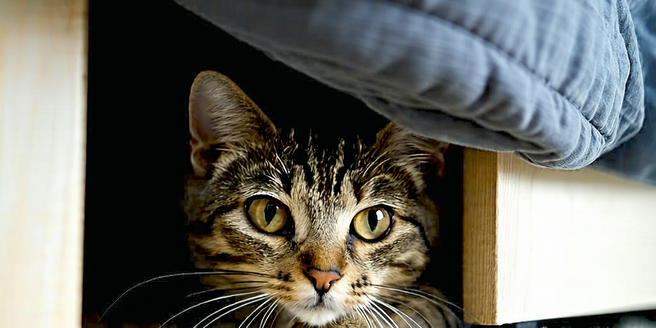
Understanding Storm Anxiety in Pets
Storm anxiety in pets is a common issue affecting both dogs and cats. During a storm, pets may feel trapped and helpless due to the overwhelming noise and sudden changes in atmospheric pressure. This can trigger a fight-or-flight response. Dogs, in particular, are known to be highly sensitive to environmental changes, making them more susceptible to anxiety during stormy weather. Symptoms can include pacing, whining, shaking, or hiding. Recognizing and understanding these anxiety signs is crucial for pet owners to offer the right support to help soothe and calm their pets. Building a safe space or using comforting tools like anxiety wraps or white noise machines can significantly help in managing their stress levels during a storm.
Identifying the Signs of Storm Anxiety
Identifying storm anxiety in pets involves understanding their body language and behavioral changes during stormy weather. Common signs include excessive barking, panting, trembling, or attempting to hide. Some pets may become clingy, seeking constant reassurance from their owners. In severe cases, destructive behavior such as chewing or scratching furniture can occur as they attempt to escape the perceived threat. It is important for pet owners to remain calm themselves, as pets can pick up on their owner’s stress and anxiety. Behavioral changes like these, especially around storms, suggest an anxiety disorder that should not be ignored. Observing and noting any stress-related behaviors will help in addressing storm anxiety effectively. Owners can deploy calming strategies or consult a vet to explore treatment options.
Preparing Your Home for Stormy Weather
Preparing your home for stormy weather can significantly help alleviate a pet’s anxiety. Start by creating a safe and comforting space where your pet can retreat during a storm. This could be a room with minimal windows to reduce exposure to alarming sights and sounds. Adding familiar items like favorite toys or bedding can provide reassurance. Installing soundproofing elements such as heavy curtains or noise-canceling devices can also help create a tranquil environment. Consider playing soft music or using white noise machines to further mask the sounds of the storm. Additionally, consider using pheromone diffusers to promote a calming atmosphere. It’s essential to stay calm yourself, as pets often take cues from their owners’ reactions.
Natural Remedies to Calm Anxious Pets
Many pet owners turn to natural remedies to calm their anxious pets during storms. Herbal supplements such as chamomile and valerian root are popular choices known for their calming effects. These natural options are often preferred by those seeking holistic solutions. CBD oil, derived from hemp, is another option gaining popularity for its potential to reduce anxiety without psychoactive effects. Some owners also explore behavioral training to help pets manage their anxiety more effectively. It’s essential to consult with a veterinarian before administering any supplements to ensure they’re safe and won’t interact negatively with your pet’s current medications. Additionally, some owners find success using aromatherapy with calming scents like lavender, which can be diffused into the environment or applied to a pet’s bedding.
When to Seek Professional Help
While many pets experience some level of anxiety during storms, persistent and extreme reactions may require professional intervention. It’s essential to observe your pet’s behavior to identify early signs of stress. Many pet owners find it helpful to create a safe space indoors where their pets can retreat during storms. If your pet’s anxiety leads to destructive behavior, self-harm, or signs of severe stress, it’s crucial to consult a veterinarian. They can assess whether prescription medication is appropriate and guide behavior modification techniques or training that could help manage anxiety. Sometimes a referral to a veterinary behaviorist is necessary for specialized treatment plans. Early intervention can improve your pet’s quality of life, helping them to cope with storms without experiencing overwhelming anxiety.
